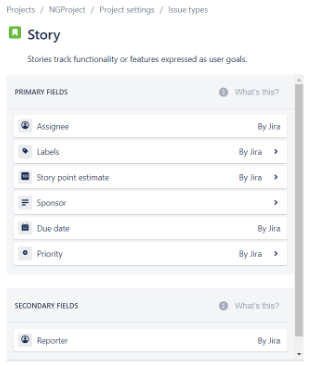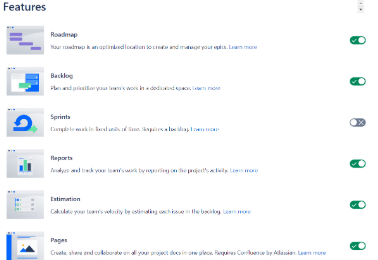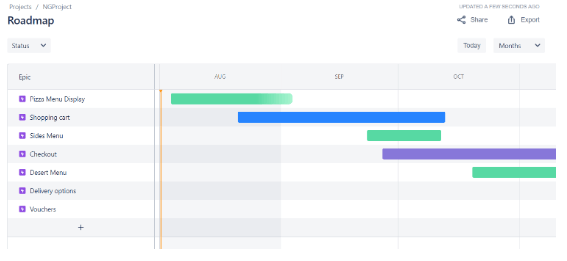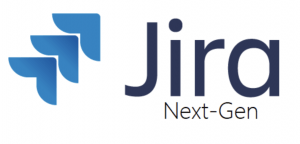Next-Generation Jira Projects is an Atlassian Cloud feature designed to allow teams to collaborate on projects with an emphasis on being able to quickly tailor their board, fields, and other features without requiring a Jira Admin to make the changes. This allows teams to quickly learn, adapt and change the way they work. If you’ve used Trello before, well, that’s pretty much what Atlassian are trying to do inside a Jira Project.
At the heart of the Next-Gen project is the Kanban board, which defines the workflow, if you want a new step in your process, simply add a new column, it’s that simple!

Customizing the project is also incredibly simple, a project admin can define issue types, customize fields and select who works on the project using an intuitive interface.
These modifications are local to the Next-Gen project so that changes can be made without affecting other projects, even creating entities traditionally global in Jira, such as Custom Fields and Issue types, are now locally managed.

Screenshot: Showing how to set up the fields for a particular Issue Type.
Features:
Project features can be enabled and disabled as needed to keep the project minimal; if you don’t need agile reports, don’t enable them, if you want Story Point estimation, you no longer need to know which fields to make appear, all you need to do is switch on the relevant feature.

Permissions:
Jira Permission schemes can be complex, Next-Generation projects simplify these in three levels:
- Viewer - can view and comment
- Member - can create, edit and work on issues
- Administrator - can change the project settings
Roadmaps:
A unique feature has been added to Next-Generation projects to allow Epics to be visualized on a timeline, helping teams see the roadmap for their project. This is simple but effective enough for small teams working on a single product.

Why would I want to use Classic projects ever again?
Next-Generation projects have a number of disadvantages over classic projects, so it’s important to have an understanding of when it’s appropriate to choose one over the other.
|
Advantages of Next-Gen Projects |
Limitations of Next-Gen Projects |
|
Terrific user experience, Kanban boards, reports, and Epic roadmap features are all visually appealing. |
Workflow allows transition from any status to any status, workflows that require linear steps are not possible (e.g. Develop then code-review then test). |
|
Simple configuration using an intuitive interface, makes it easy to on-board new project admins. |
Issues can be deleted by any project member. |
|
Reduced need for Jira Admins to perform configuration work, enables projects to be safely and rapidly re-configured. |
Custom Fields are private to the Next-Generation project, but searchable in Issue Navigator, meaning you can end up with duplicate custom fields of the same name when searching. This can quickly make searching for Issues within Jira problematic and difficult to do. |
|
Supports Sprints or Kanban ways of working. |
Limited workflow functionality, no conditions, post-functions, etc. |
|
Exciting future roadmap. |
Epics have limited functionality, can’t appear on a Kanban board, or have a separate workflow. |
|
|
Data might be lost when changing from Next-Generation to Classic. |
|
|
There is currently no migration path for Next-Generation projects from Cloud to Server. |
|
|
Only a single board is allowed per project. |
Summary
Jira Next-Generation Projects are perfect for teams collaborating together on a project who require the ability to quickly adapt the way they work. Next-Gen Projects may also be ideal for those that are new to working with Jira or Kanban and who want to gain some experience using the tool before settling on a ‘fixed’ workflow.
Its greatest power is its flexibility and tailoring to the precise needs of the team. This flexibility can also be its biggest downside, enabling a lack of consistency with other teams, which in turn makes any kind of cross-project reporting, searching, or control tricky to do.
My advice is, if it’s a standalone team working on a project that needs the kind of flexibility provided by Next-Gen projects, try them out, you’ll love them (just be careful how you name custom fields). However, if you need process control, permissions, and cross-project reporting, stick with the classic.
Published: Aug 5, 2019
Updated: Jun 22, 2023

